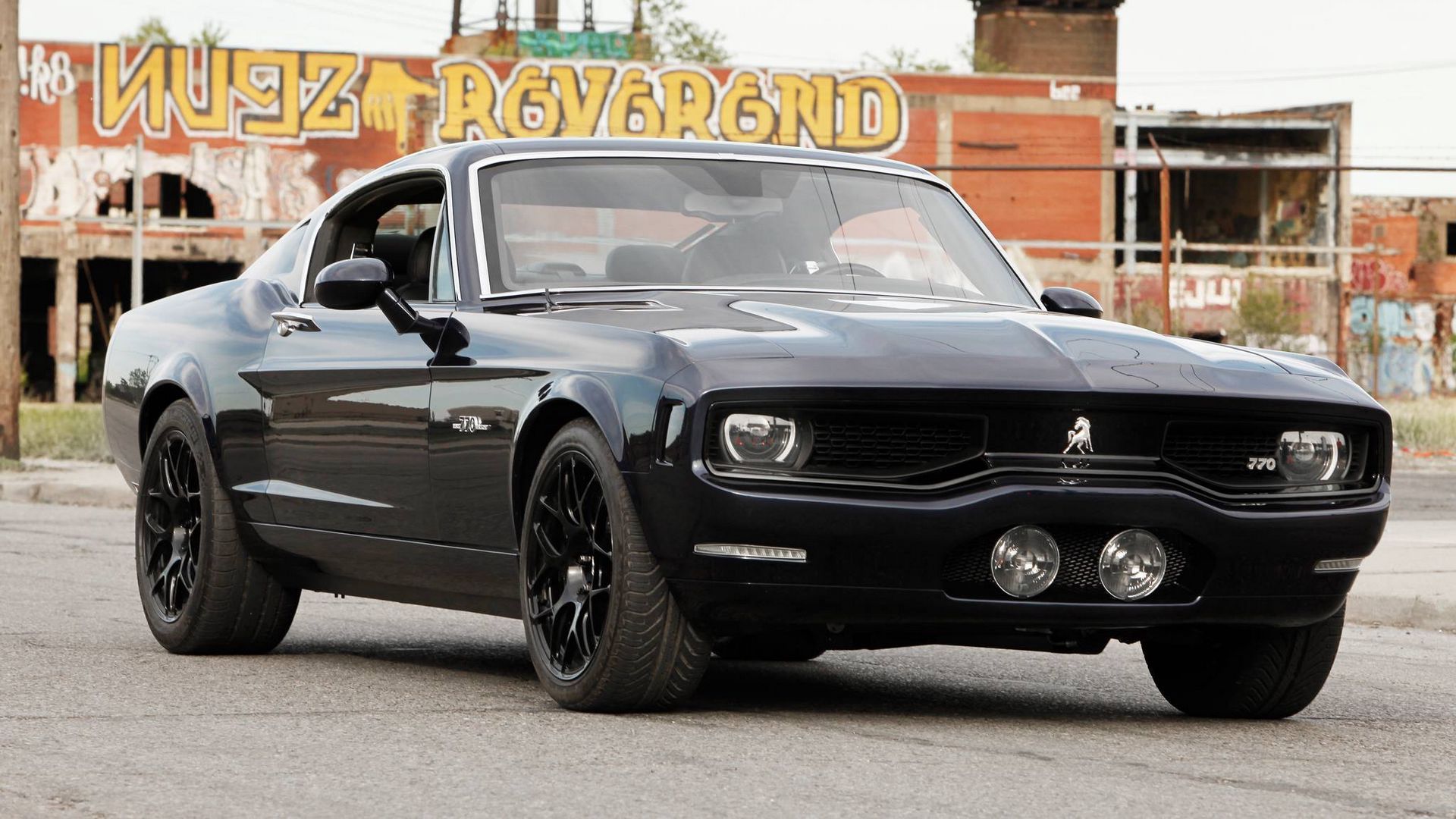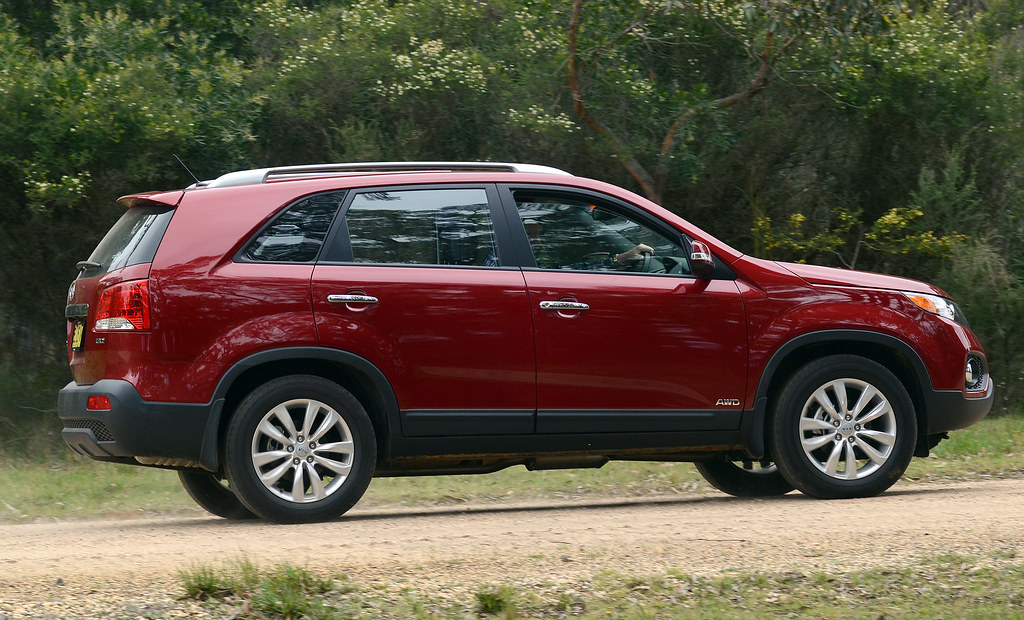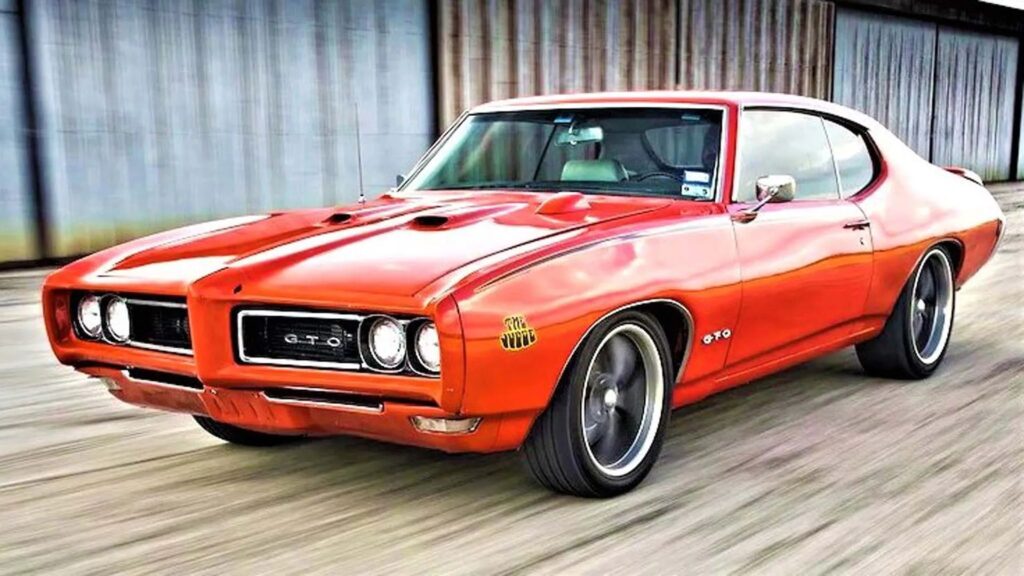
The 1960s and 1970s represented a truly fascinating, and often tumultuous, era for the automotive industry. It was a period marked by groundbreaking innovation, alongside seismic shifts in consumer demand, economic pressures, and evolving environmental concerns. While the familiar names of Ford, Chevrolet, and Dodge often dominate discussions of this time, the real narrative of American motoring was far richer, woven with threads from numerous other manufacturers. These brands, for a time, burned brightly before ultimately fading into memory. They dared to challenge, to innovate, and sometimes, to simply exist in the shadow of automotive giants.
Many car enthusiasts readily recall iconic models from this dynamic two-decade span. However, fewer remember the entire marques that brought these vehicles to life, or the compelling reasons why these once-ubiquitous names eventually vanished. From ambitious ventures that soared briefly, to established players that gradually succumbed to unrelenting market forces, each forgotten brand carries a unique story. These narratives speak of distinct design philosophies, engineering prowess, and the relentless challenges of the competitive automotive marketplace.
Join us now as we embark on a journey deep into the archives, moving beyond the well-trodden paths of conventional automotive history. Our goal is to unearth the legacies of 15 truly forgotten car brands from the vibrant decades of the ’60s and ’70s. In this initial section, we will shine a spotlight on seven prominent American manufacturers whose distinctive vehicles once graced driveways and highways across the nation. We’ll explore their unique contributions, their defining characteristics, and the compelling reasons why they no longer exist as independent entities today. Prepare to rediscover some true pioneers and unique contenders that, while no longer with us, left indelible marks on the automotive world.
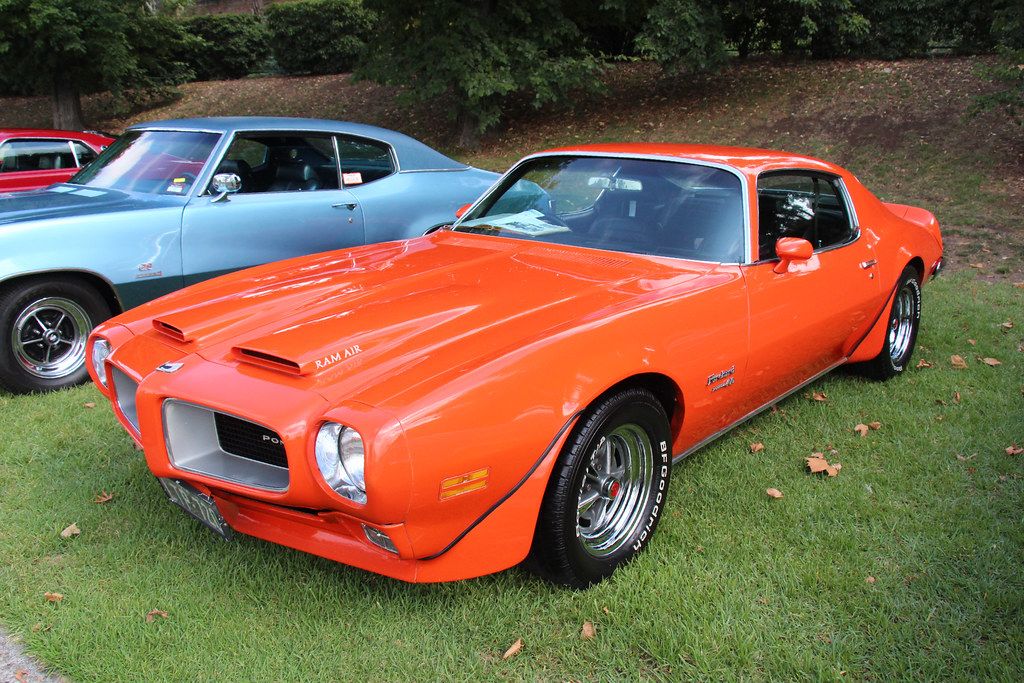
1. **Pontiac (1926-2010)**For generations, Pontiac was synonymous with high-performance and undeniable flair within the General Motors empire. Throughout the 1960s and 1970s, this division cemented its legend with iconic muscle cars: the GTO, Firebird, and Trans Am. These were more than vehicles; they were cultural statements, embodying youth and rebellion. They blended powerful V8 engines with distinctive styling, consistently topping sales charts and dominating drag strips. Pontiac’s commitment to performance and bold aesthetics made it an undeniable favorite during the golden age of American muscle.
However, as the automotive landscape shifted into the 21st century, Pontiac’s once-clear identity began to falter. GM faced increasing pressures, and the brand struggled to adapt to new market demands while maintaining its performance image. With GM grappling with severe cash flow issues and ultimately filing for bankruptcy, Pontiac was tragically discontinued in 2010. Its demise left a significant void, closing a storied chapter. Despite its end, the powerful legacy of Pontiac’s trailblazing muscle cars and its unique contribution to performance motoring remains cherished by collectors and enthusiasts who remember its exhilarating presence.
Car Model Information: 1966 Pontiac GTO Coupe
Name: Pontiac GTO
Caption: 2005 Pontiac GTO
Manufacturer: Pontiac (automobile),Holden
Class: Mid-size car,Compact car,Mid-size car
Production: 1963–1974,2003–2006
Predecessor: Pontiac Tempest
Layout: Front-engine, rear-wheel-drive layout
ModelYears: 1964-1974 2004-2006
Categories: 1970s cars, 2000s cars, All articles with unsourced statements, Articles with short description, Articles with unsourced statements from October 2008
Summary: The Pontiac GTO is a front-engine, rear-drive, two-door, and four-passenger automobile manufactured and marketed by the Pontiac division of General Motors over four generations from 1963 until 1974 in the United States — with a fifth generation made by GM’s Australian subsidiary, Holden, for the 2004 through 2006 model years.
The first generation of the GTO is credited with popularizing the muscle car market segment in the 1960s. Some consider the Pontiac GTO to have started the trend with all four domestic automakers offering a variety of competing models.
For the 1964 and 1965 model years, the GTO was an optional package on the intermediate-sized Pontiac LeMans. The 1964 GTO vehicle identification number (VIN) started with 22, while the 1965 GTO VIN began with 237. The GTO was designated as a separate Pontiac model from 1966 through 1971 (VIN 242…). It became an optional package again for the 1972 and 1973 intermediate LeMans. For 1974, the GTO was an optional trim package on the compact-sized Ventura.
The GTO model was revived for the 2004 through 2006 model years as a captive import for Pontiac, a left-hand drive version of the Holden Monaro, itself a coupé variant of the Holden Commodore.
Get more information about: Pontiac GTO
Buying a high-performing used car >>>
Brand: Pontiac Model: GTO
Price: $59,991 Mileage: 4,408 mi.
Read more about: Lost Legends: 11 Iconic Car Brands That Are Gone Forever
2. **Oldsmobile (1897-2004)**Few American car companies boast a history as rich and long-standing as Oldsmobile, established in 1897. It was an innovator in mass-producing automobiles even before Ford. Throughout the 1960s and 1970s, Oldsmobile continued its tradition of offering popular, reliable, and stylish vehicles for American families. Models like the Cutlass Supreme became ubiquitous, offering comfort, accessible luxury, and respectable performance. The performance-oriented 442 carved its own niche, showcasing Oldsmobile’s capability to compete in the muscle car market. These nameplates were integral parts of countless family stories, providing attainable quality and often forward-thinking design.
Despite its deep roots and widespread appeal, the brand faced significant challenges by the late 20th century. Decades of sagging sales, coupled with a “watering down” of its identity due to GM’s badge engineering, eroded its distinctiveness. General Motors discontinued Oldsmobile in 2004, ending one of America’s most historic automotive names. While its final years were a struggle, the memory of Oldsmobile’s innovations, popular models, and its century-long presence in the American automotive landscape continues to fascinate those who appreciate automotive heritage.
Car Model Information: 2021 Lincoln Navigator Reserve
Name: Oldsmobile Cutlass Supreme
Manufacturer: Oldsmobile
Production: 1965–1997
Layout: FR layout
Successor: Oldsmobile Intrigue
Class: Personal luxury car
Caption: 1970 Oldsmobile Cutlass Supreme
Categories: 1960s cars, 1970s cars, 1980s cars, 1990s cars, All Wikipedia articles written in American English
Summary: The Oldsmobile Cutlass Supreme is a mid-size car produced by Oldsmobile between 1966 and 1997. It was positioned as a premium offering at the top of the Cutlass range. It began as a trim package, developed its own roofline, and rose during the mid-1970s to become not only the most popular Oldsmobile but the highest selling model in its class.
It was produced as a rear-wheel drive two-door hardtop, sedan, and station wagon into the 1980s, and a convertible through 1972. In 1988 Oldsmobile sought to capitalize on the brand equity of the Cutlass Supreme marque by replacing it with a downsized front-wheel drive model based on the General Motors W platform.
When production ended there was no direct replacement for the Cutlass Supreme, although the Intrigue introduced for 1998 was designed in size and price to replace all the Cutlass models.
Get more information about: Oldsmobile Cutlass Supreme
Buying a high-performing used car >>>
Brand: Oldsmobile Model: Cutlass Supreme
Price: $39,193 Mileage: 92,317 mi.
Read more about: Lost Legends: 11 Iconic Car Brands That Are Gone Forever
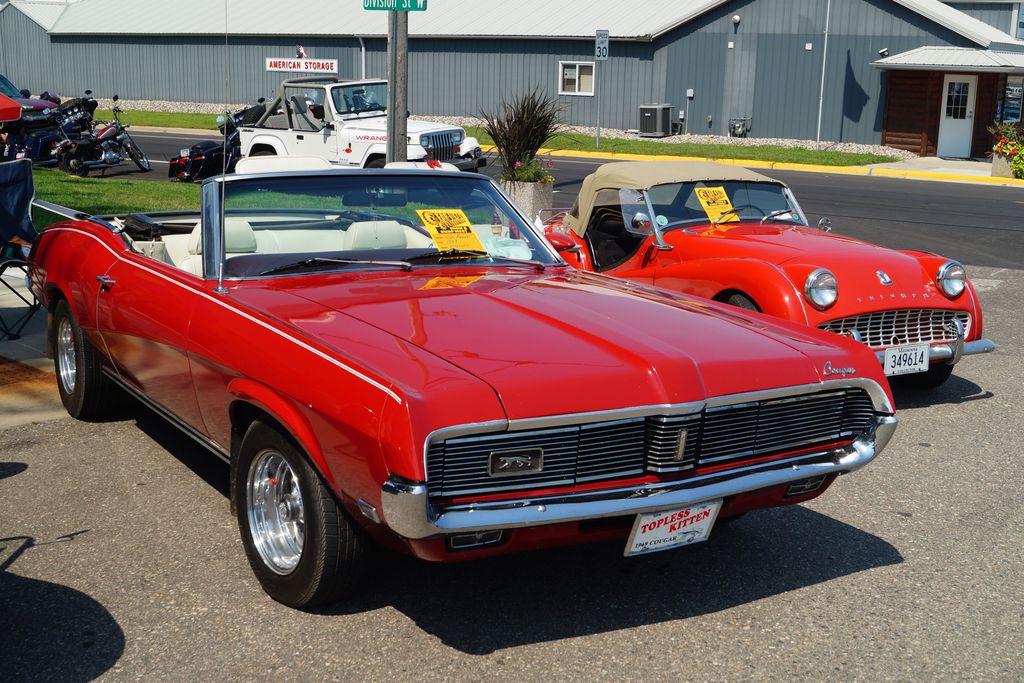
3. **Mercury (1938-2011)**Ford’s ambitious creation, Mercury, was strategically designed to fill a crucial niche as a middle-line brand between Ford and Lincoln. For many decades, this proved remarkably effective, giving Mercury a substantial presence through the 1960s and 1970s. Models such as the sleek Cougar, a more refined take on the pony car, and the robust Grand Marquis, a quintessential full-size American sedan, were once highly regarded. These vehicles offered a unique blend of Ford’s reliability with a touch of added sophistication and styling, appealing to buyers desiring something more premium than a standard Ford.
However, as the 21st century dawned, Mercury’s distinctiveness waned significantly. Models increasingly became “badged-up Fords,” sharing too many components without enough meaningful differentiation. This blurring of lines undermined the brand’s original purpose. Facing declining demand and a lack of clear market positioning, Ford discontinued Mercury in 2011. Its closure marked the end of a long chapter for a brand that once represented an accessible step towards luxury, a key part of the ’60s and ’70s automotive story that deserves another look.
Car Model Information: 1995 Mercury Cougar XR7
Name: Mercury Cougar
Caption: 1969 Mercury Cougar (first generation)
Manufacturer: Mercury (automobile)
Layout: Front-engine, rear-wheel-drive layout
ModelYears: 1967–1997,1999–2002
Class: Pony car,Personal luxury car,Mid-size car,Sport compact
Categories: 1960s cars, 1970s cars, 1980s cars, 1990s cars, 2000s cars
Summary: The Mercury Cougar is a series of automobiles that was sold by Mercury from 1967 to 2002. The model line is a diverse series of vehicles; though the Cougar nameplate is most commonly associated with two-door coupes, at various stages in its production, the model also was offered as a convertible and a hatchback. During its production as the mid-size Mercury line, the Cougar was also offered as a four-door sedan and five-door station wagon.
In production for 34 years across eight generations (skipping the 1998 model year), the Cougar is second only to the Grand Marquis (36 years) in the Mercury line for production longevity. 2,972,784 examples were produced, making it the highest-selling Mercury vehicle. During the 1970s and 1980s, the marketing of the Mercury division was closely associated with the Cougar, with promotional materials advertising Mercury dealers as “The Sign of the Cat” with big cats atop Lincoln-Mercury dealer signs. Cat-related nameplates were adopted by other Mercury lines, including the Bobcat and Lynx.
During its production, the Cougar was assembled at the Dearborn Assembly Plant (part of the Ford River Rouge Complex) in Dearborn, Michigan from 1967 until 1973, San Jose Assembly (Milpitas, California) from 1968 into early 1969, Lorain Assembly (Lorain, Ohio) from 1974 until 1997, and at Flat Rock Assembly (Flat Rock, Michigan) from 1999 through 2002.
Get more information about: Mercury Cougar
Buying a high-performing used car >>>
Brand: Mercury Model: Cougar
Price: $10,995 Mileage: 37,589 mi.
Read more about: Lost Legends: 11 Iconic Car Brands That Are Gone Forever
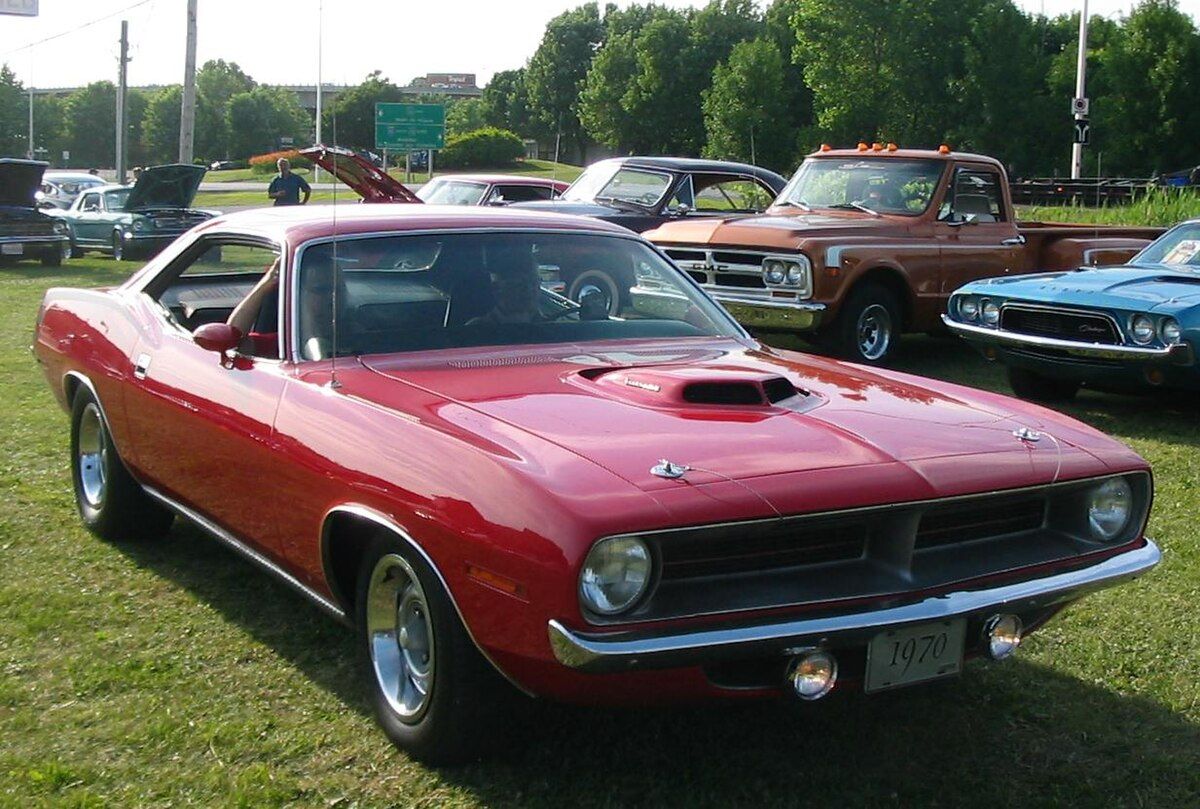
4. **Plymouth (1928-2001)**As Chrysler’s budget brand, Plymouth played a vital role in providing affordable yet robust vehicles to American families for much of the 20th century. During the dynamic 1960s and 1970s, Plymouth truly hit its stride, producing a remarkable array of best-sellers and cultural icons. The Barracuda, a sleek and potent pony car, and the Road Runner, a bare-bones, high-performance muscle car famous for its cartoon-themed marketing, perfectly captured the era’s automotive enthusiasm. Plymouth’s strength lay in offering compelling vehicles across different segments, delivering exceptional value and reliable quality, from drag-strip machines to dependable daily drivers.
However, the brand began to lose its unique footing as the automotive landscape evolved. By the 1990s, Plymouth’s model lineup increasingly mirrored that of its Dodge and Chrysler siblings, suffering significantly from pervasive badge engineering. This lack of differentiation led to consumer confusion and steadily eroded the brand’s distinct identity. Facing persistent poor sales and an inability to clearly distinguish itself, Chrysler discontinued Plymouth in 2001. It was a somber end for a marque that had once been a powerhouse, responsible for some of the most memorable and successful vehicles in American history.
Car Model Information: 2017 Nissan Rogue SV
Name: Plymouth Road Runner
Assembly: Detroit,Michigan
Manufacturer: Plymouth (automobile)
Class: Mid-size car
Production: 1968–1980
Related: unbulleted list
Layout: FR layout
Categories: 1970s cars, 1980s cars, All articles needing additional references, All articles with peacock terms, All articles with unsourced statements
Summary: The Plymouth Road Runner is a muscle car introduced by Chrysler in the United States for the 1968 model year and marketed under its Plymouth brand. Initially based on the Belvedere, the brand’s basic mid-size model, the Road Runner combined a powerful engine with a spartan trim level and a price that undercut increasingly upscale and expensive muscle cars such as the Pontiac GTO and Plymouth’s own GTX. It was initially a sales success.
The Road Runner was built in three generations on the mid-size B platform. Like most muscle cars, its performance and sales declined in the 1970s due to an increasing focus on fuel economy and the adoption of more stringent U.S. emission standards. The nameplate became to a trim package for the compact Plymouth Volaré for model year 1976—no longer offering any special performance capability—and was discontinued in 1980.
Get more information about: Plymouth Road Runner
Buying a high-performing used car >>>
Brand: Plymouth Model: Road Runner
Price: $12,988 Mileage: 83,421 mi.
Read more about: Lost Legends: 11 Iconic Car Brands That Are Gone Forever
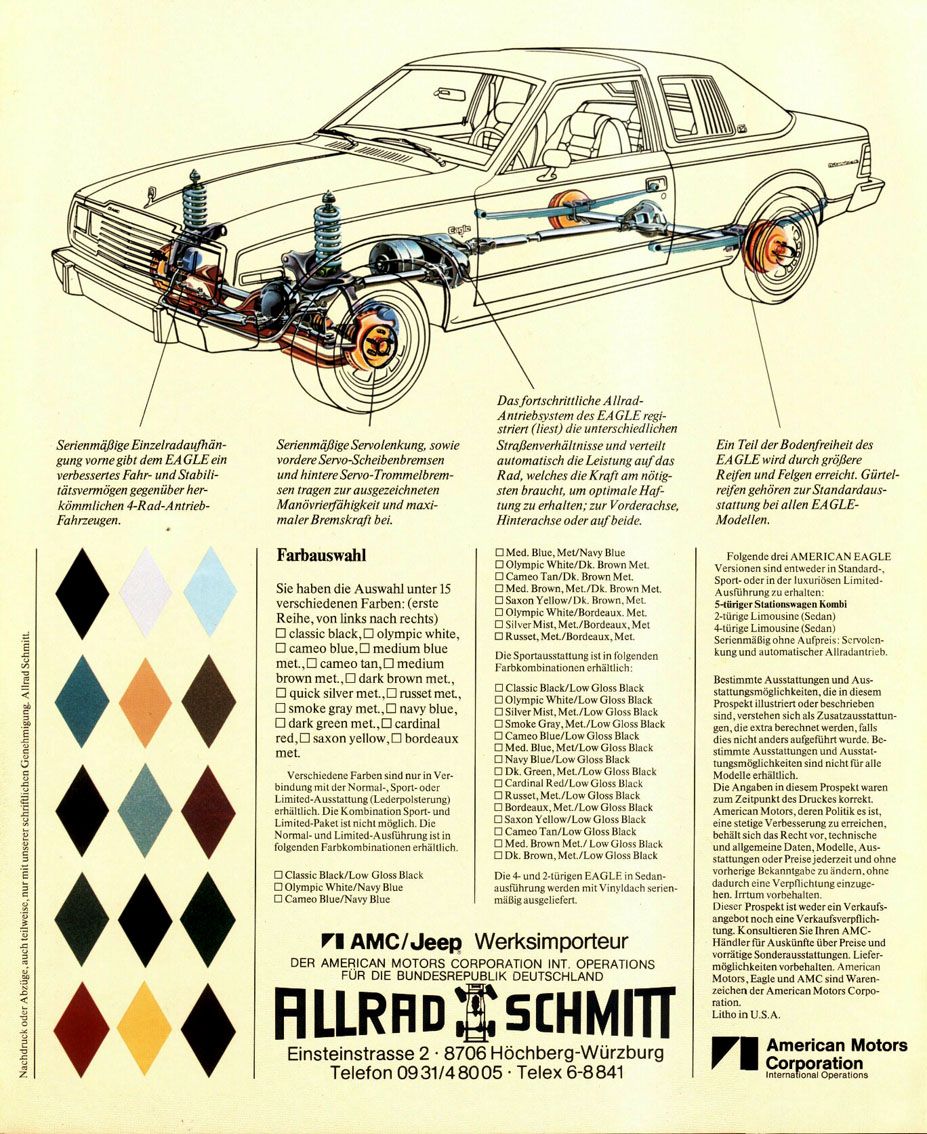
5. **AMC (American Motors Corporation) (1954-1988)**In a world dominated by the “Big Three,” American Motors Corporation (AMC) stood as a plucky, independent challenger, striving to differentiate itself with innovative and often unconventional vehicles. Throughout the 1960s and 1970s, AMC became known for memorable, sometimes quirky, cars that defied convention. Models like the compact Gremlin, the wide Pacer, and the versatile Jeep Wagoneer exemplified AMC’s strategy of functional, cost-effective, and often prescient designs. The 1970 AMC Hornet, for instance, evolved into the 1978 Concord and later, blended with Jeep parts, became the AMC Eagle, a true forerunner of the modern crossover SUV.
AMC consistently offered unique solutions and clear alternatives to mainstream offerings, cultivating a loyal following. Yet, despite building cult favorites and demonstrating foresight, AMC faced an uphill battle against the massive resources of its larger competitors. The constant struggle for market share and capital ultimately proved insurmountable. Chrysler acquired AMC in 1987, primarily for the successful Jeep brand, liquidating the rest of AMC’s passenger car lines. While the AMC name is gone, its legacy lives on through Jeep and the distinctive designs of its cars that continue to captivate enthusiasts today.
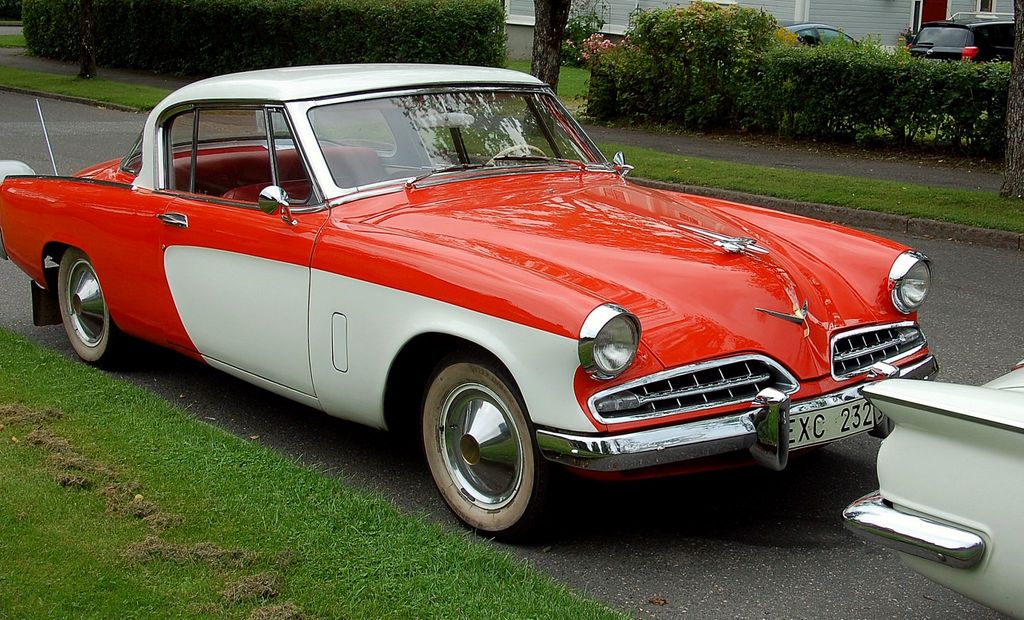
6. **Studebaker (1852-1967)**The story of Studebaker is one of remarkable longevity and adaptability, beginning as a wagon maker before transitioning into automobile manufacturing. By the mid-20th century, Studebaker was renowned for fashionable models like the groundbreaking Avanti and the popular Champion. Even as the 1960s dawned, Studebaker gallantly continued to produce cars, albeit under difficult circumstances. The Avanti, launched in 1962, stood as a striking example of their innovative spirit, featuring a truly futuristic design and strong performance that contrasted sharply with its contemporaries, proving Studebaker’s capability for visionary vehicles.
However, despite these flashes of brilliant design and a loyal customer base, Studebaker faced a perfect storm of bad economic choices and relentless competition from the “Big Three.” The company struggled with outdated facilities, labor disputes, and dwindling market share, making profitability elusive. Valiant efforts to sustain car production proved futile. By 1967, Studebaker ceased making cars altogether, ending an era for an American legend. Its final years were a testament to the struggle of independent automakers. Today, Studebaker cars, particularly the iconic Avanti, are prized by collectors as beautiful reminders of an innovative brand that succumbed to market realities.
Car Model Information: 1964 Studebaker Avanti
Name: Studebaker Avanti
Caption: 1963 Studebaker Avanti
Manufacturer: Studebaker
Aka: Avanti
Production: 1962: 1,200;
Assembly: Studebaker Corporation#Studebaker Factories,South Bend, Indiana
Predecessor: Studebaker Gran Turismo Hawk
Class: Personal luxury car
BodyStyle: coupe
Layout: FR layout
Engine: 289 CID
Abbr: on
Transmission: Manual transmission
Wheelbase: 109 in
Length: 192.4 in
Width: 70.3 in
Height: 53.8 in
Weight: 3095 lb
Related: Studebaker Lark
Designer: Raymond Loewy#Avanti
Categories: All articles with incomplete citations, Articles with incomplete citations from September 2018, Articles with short description, CS1 errors: missing title, Cars discontinued in 1963
Summary: The Studebaker Avanti is a personal luxury coupe manufactured and marketed by Studebaker Corporation between June 1962 and December 1963. A halo car for the maker, it was marketed as “America’s only four-passenger high-performance personal car.”
Described as “one of the more significant milestones of the postwar industry”, the Raymond Loewy-designed car offered safety features and high-speed performance. Called “the fastest production car in the world” upon its introduction, a modified Avanti reached over 170 mph (270 km/h) with its supercharged 289-cubic-inch (4,740 cm3) R3 engine at the Bonneville Salt Flats. In all, it broke 29 world speed records at the Bonneville Salt Flats.
Following Studebaker’s discontinuation of the model, a succession of five ventures manufactured and marketed derivatives of the Avanti model through 2006. These ventures licensed intellectual property and, in some cases procured parts, through arrangements with the successors to the Studebaker assets.
Get more information about: Studebaker Avanti
Buying a high-performing used car >>>
Brand: Studebaker Model: Avanti
Price: $57,000 Mileage: 45,354 mi.
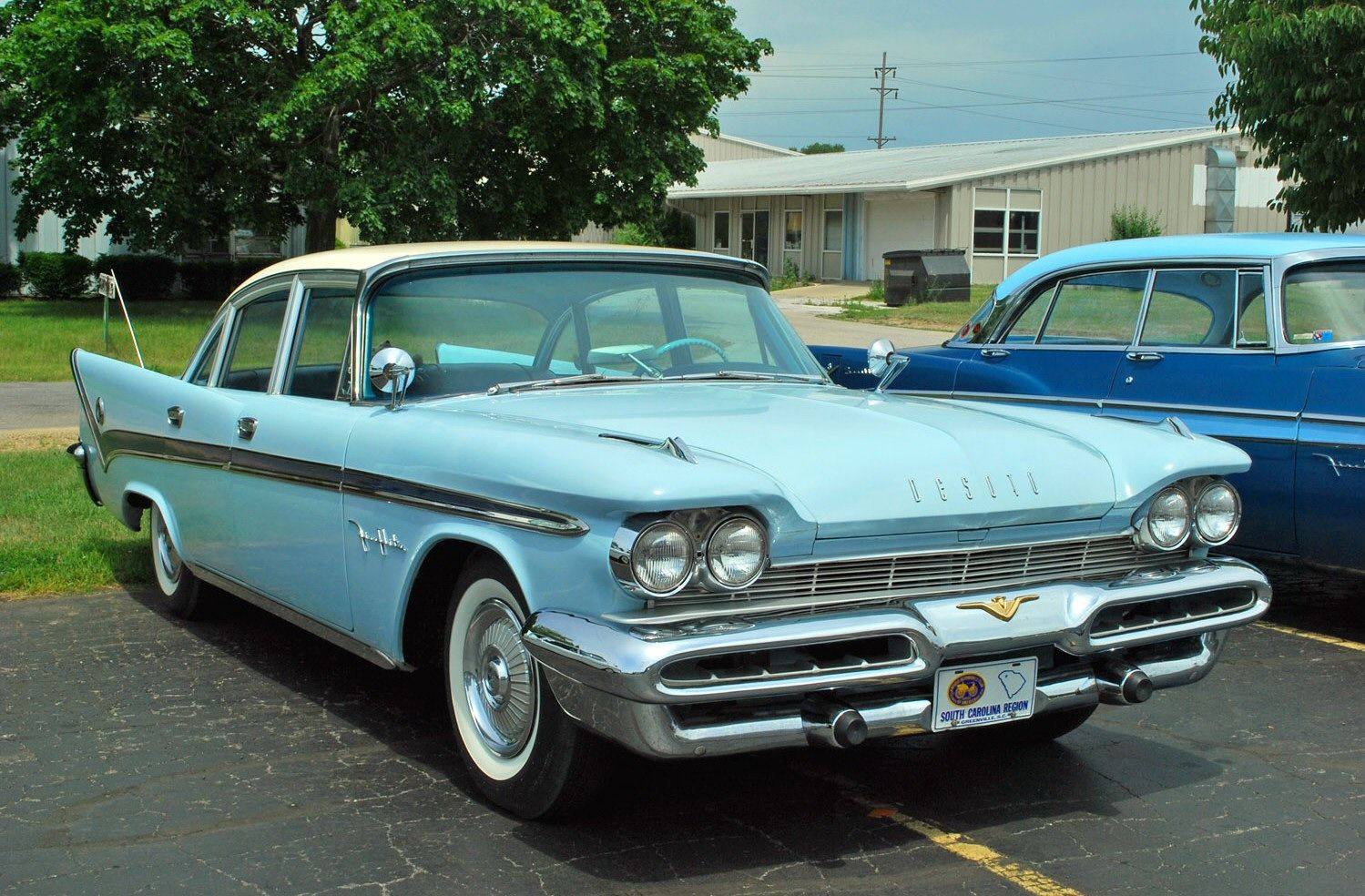
7. **DeSoto (1928-1961)**DeSoto, a sub-brand of Chrysler, was introduced in 1928 to bridge the gap between economical Plymouth and premium Chrysler offerings. Throughout its lifespan, especially shining in the post-war boom of the 1950s and into the early 1960s, DeSoto was known for fashionable sedans and, memorably, for embracing the ostentatious tail fins that defined American automotive design. DeSoto cars often boasted a distinctively bold and flamboyant style that helped them stand out, appealing to buyers desiring extravagance and a powerful presence, with comfortable rides and robust engineering.
Despite these qualities, DeSoto’s target market found itself increasingly squeezed. As Chrysler expanded and refined its own lineup and that of Dodge, the space for DeSoto became progressively narrower. Its offerings began to significantly overlap, diminishing its unique identity and leading to shrinking sales. Chrysler dropped DeSoto in 1961 with little notice to dealers, bringing an abrupt end to the brand. DeSoto’s demise served as a stark reminder of the brutal competition and challenges of brand differentiation. Its cars, particularly those with exuberant tail fins, remain cherished artifacts of a particular stylistic era.
Having explored the narratives of once-prominent American brands, our journey now ventures further, unearthing eight additional obscure and often overlooked car brands and their distinctive models from the 1960s and 1970s. These vehicles, whether born from ambitious corporate experiments, niche European ingenuity, or peculiar kit-car dreams, each left their own unique, albeit sometimes minor, impact on automotive history. Their designs were often unconventional, their innovations sometimes prescient, and their stories collectively paint a richer, more diverse picture of an era defined by rapid change and bold experimentation.
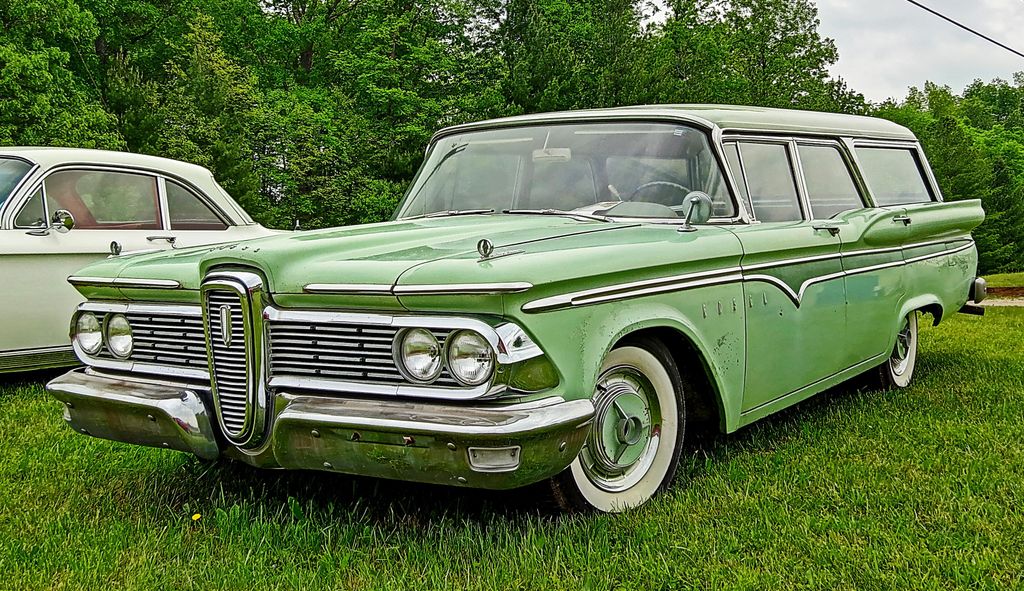
8. **Edsel (1958-1960)**Few names in automotive history conjure up as vivid a picture of failure as Edsel. Introduced by Ford, this ambitious venture promised a high-end mid-market brand, intended to fill a perceived gap between the mainstream Ford and luxury Lincoln marques. Despite a significant investment and considerable fanfare surrounding its launch, the Edsel struggled from the outset to find its footing with the public.
Its distinctive, often polarizing, design, particularly the infamous horse-collar grille, was widely criticized, and its hefty price tag further alienated potential buyers. The brand quickly became one of the most notorious auto failures in history. Ford ultimately pulled the plug on Edsel after only three model years, in 1960, having lost hundreds of millions of dollars on the project. Though its tenure was brief, the Edsel remains a potent reminder of the risks inherent in automotive market forecasting and design interpretation.
Car Model Information: 1959 Edsel Ranger
Name: Mercury
Logo: Mercury Logo (automobile company).svg
LogoSize: 150
Fate: Discontinued
Type: Division (business)
Foundation: [object Object]
Founder: Edsel Ford
Defunct: [object Object]
LocationCity: Dearborn, Michigan,Michigan
LocationCountry: U.S.
KeyPeople: Edsel Ford, founder
Industry: Automotive industry
Products: Automobile
Parent: Ford Motor Company
Categories: 1938 establishments in Michigan, 2011 disestablishments in the United States, All articles needing additional references, All articles with unsourced statements, American brands
Summary: Mercury was a brand of medium-priced automobiles that was produced by American manufacturer Ford Motor Company between the 1939 and 2011 motor years. Created by Edsel Ford in 1938, Mercury was established to bridge the gap between the Ford and Lincoln model lines within Ford Motor Company. From 1945 until its closure, it formed half of the Lincoln-Mercury Division of the company.
In addition to serving as a combined sales network for Ford’s two premium automotive brands, Lincoln-Mercury also represented the Continental (1956–1960), Edsel (1958–1960, formally designated Mercury-Edsel-Lincoln Division), Comet (1960–1961), Capri (1970-1978), De Tomaso (1972-1975), and Merkur (1985–1989, forming Lincoln-Mercury-Merkur). Through the use of platform sharing and manufacturing commonality, Mercury vehicles often shared components and engineering with Ford or Lincoln (or both concurrently), serving as counterparts for vehicles from both divisions.
Following an extended decline in sales and market share for Mercury, Ford announced the closure of the division at the end of 2010.
Get more information about: Mercury (automobile)
Buying a high-performing used car >>>
Brand: Edsel Model: Edsel
Price: $19,000 Mileage: 21,529 mi.
Read more about: 15 Cars From the 1960s That History Would Rather Forget
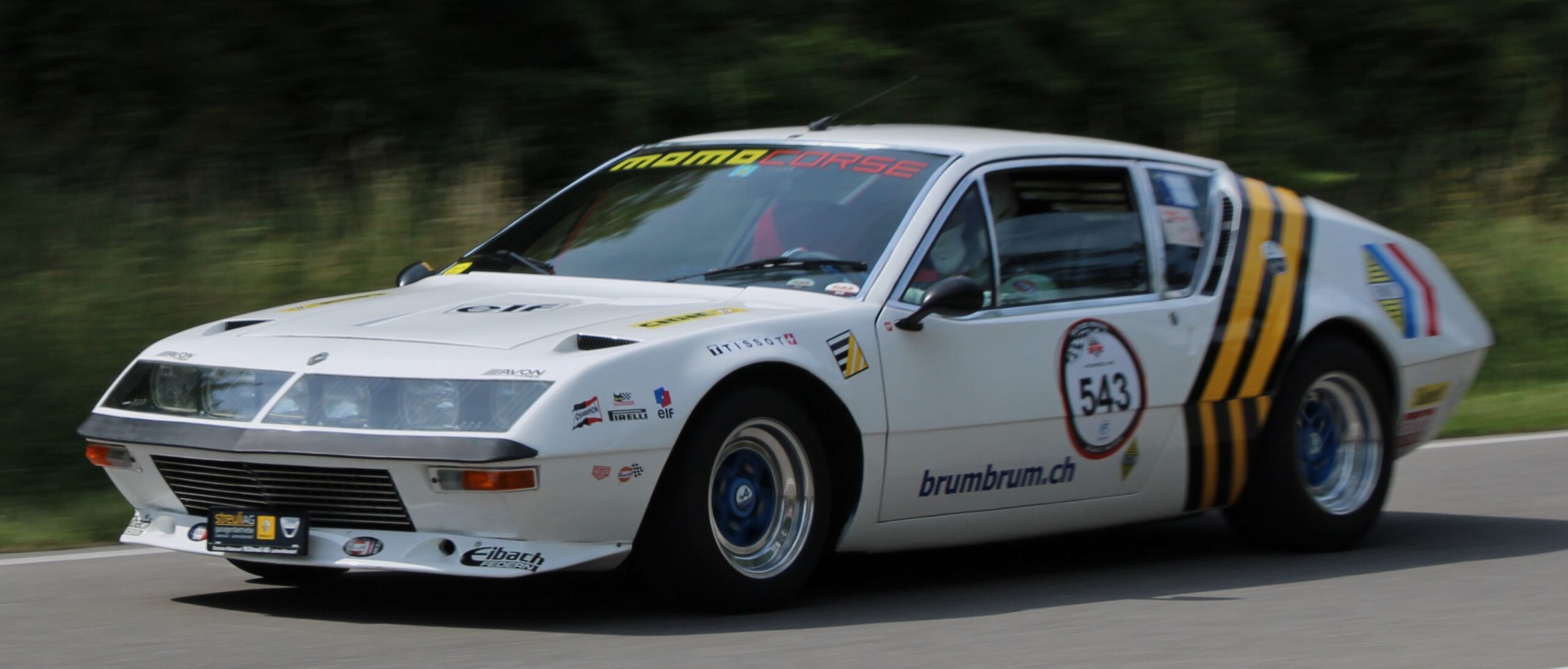
9. **Alpine A310 1600**For enthusiasts of European sports cars, the Alpine name evokes images of nimble performance and distinctive styling, primarily through its legendary A110 and the later A310 V6. However, nestled between these two more celebrated generations was a lesser-known model, the Alpine A310 1600, a car that often slips under the radar of even dedicated petrolheads. This early-seventies creation shared visual cues with the elegant Citroën SM, hinting at a sophisticated design philosophy.
Beneath its sporty exterior, the A310 1600 was powered by a 1.6-liter four-cylinder engine derived from a Renault 16, which, unfortunately, delivered a noticeable lack of power. Compounding this, the car also struggled with overall quality, a direct consequence of financial pressures at Alpine in the early seventies. The need to accelerate production for survival led to compromises that impacted both driving dynamics and finish. Despite these challenges, the A310 1600 represents an intriguing, if imperfect, chapter in Alpine’s storied history, illustrating the brand’s struggle to evolve amidst economic realities.
Read more about: Remembering the 70s: The Most Iconic Cars of a Legendary Decade
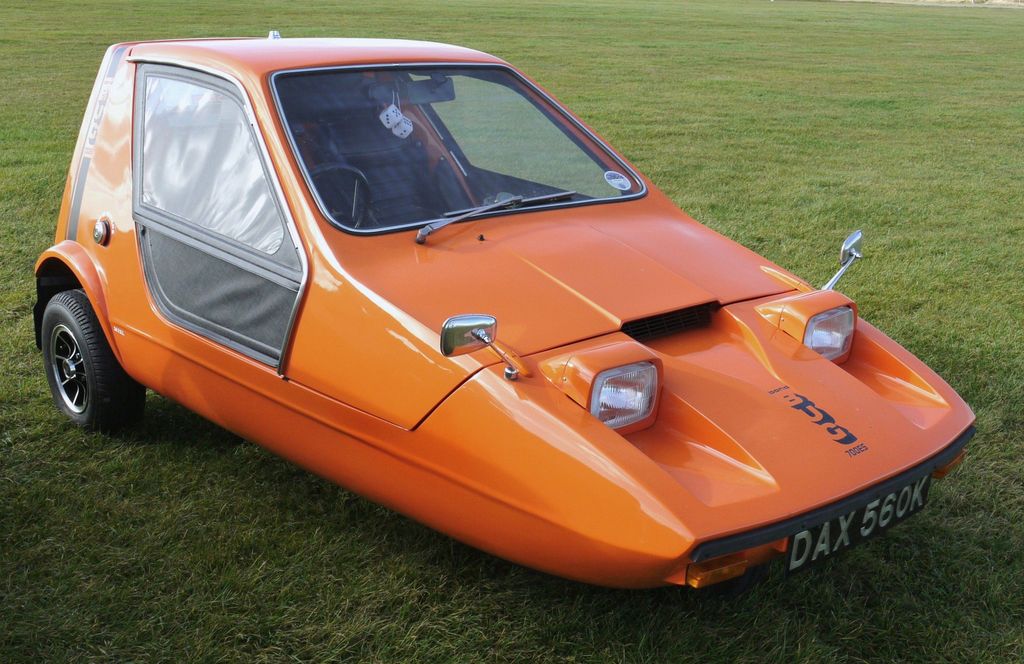
10. **Bond Bug**For those who appreciate the truly peculiar, the Bond Bug stands as an undeniable icon of British eccentricity from the early 1970s. Bond, a well-known manufacturer of three-wheelers in the UK during the post-war era, was acquired by Reliant in 1970. The new owners, famed for their Robin three-wheeler, envisioned a sportier, more youth-oriented version of their Regal model.
Penned by the imaginative Tom Karen of Ogle Design, the Bug received an absolutely amazing visual treatment, defined by its striking orange color and a saucer-inspired canopy that hinged upwards for entry. While its straight-line performance surprisingly bested that of a Mini, its higher price point proved to be a significant barrier for sales. Consequently, only just over 2,000 units were built between 1970 and 1974, ensuring its status as a quirky collector’s item and a testament to bold, unconventional automotive design.
Read more about: Maurice Tempelsman, Diamond Magnate and Jacqueline Kennedy Onassis’s Companion, Dies at 95
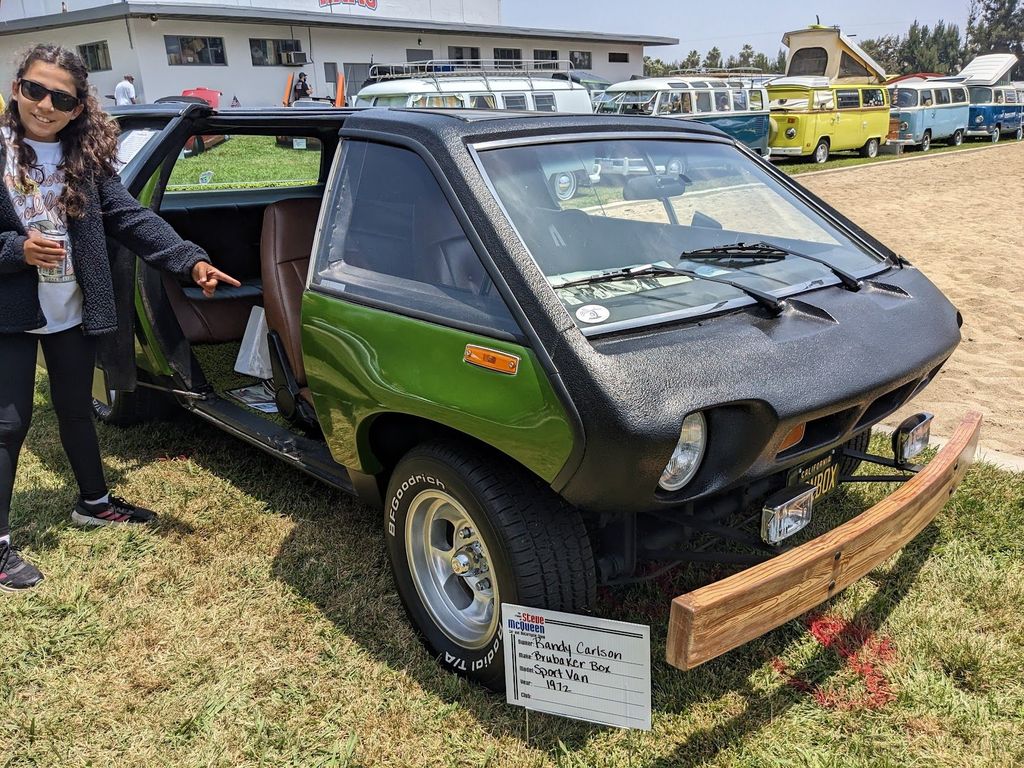
11. **Brubaker Box**Before the term “minivan” became commonplace, Curtis Brubaker conceived a vehicle so unique it’s often credited as the first of its kind: the Brubaker Box. This eclectic ‘van,’ later marketed as the Automecca Sportsvan in its kit-car days, stood apart from larger vans like the Volkswagen Bus, on which it was cleverly based. Its design philosophy centered on a limited seating capacity and a smaller overall footprint, prioritizing efficiency and distinctiveness.
One of the most striking features of the Brubaker Box was its singular door, a fascinating hybrid blending elements of both a gullwing and a sliding door. The interior was equally peculiar; most essential controls were unconventionally located on a panel beneath the driver’s window, leaving the main dashboard strikingly sparse. Adding to its charm, the rear seating consisted of nothing less than a large sofa, reflecting a design ethos that valued unconventional comfort and functional simplicity over traditional layouts. This forward-thinking yet oddball creation continues to captivate enthusiasts who admire its groundbreaking vision.
Read more about: From Shawshank to Alcatraz: The 21 Greatest Prison Films
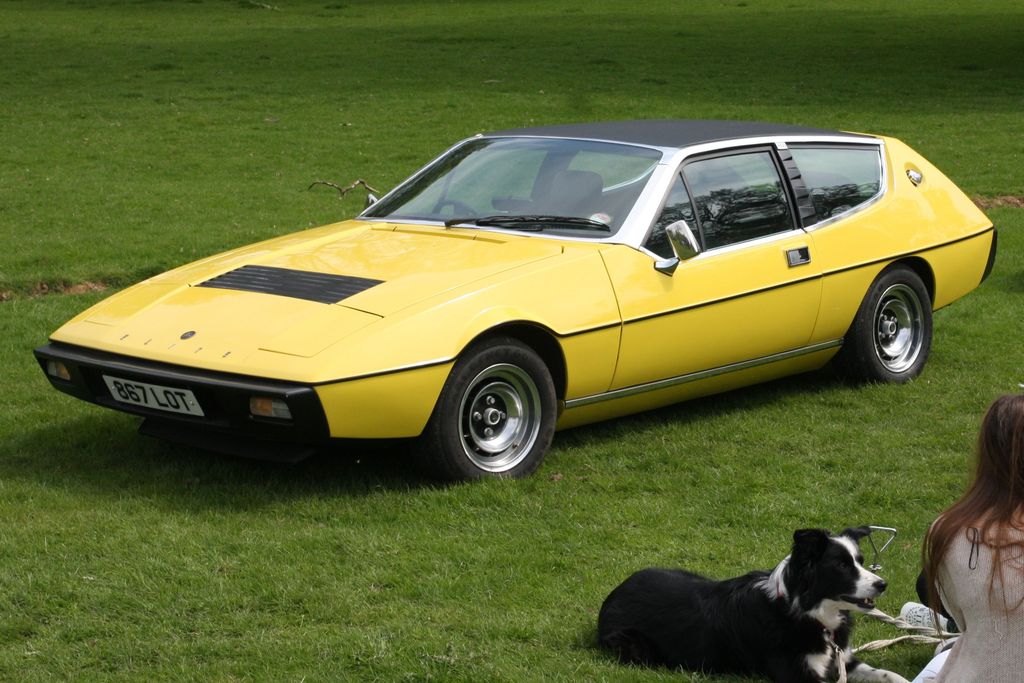
12. **Lotus Elite 75**From 1974 to 1982, Lotus embarked on a new trajectory with the production of the Type 75 Elite, a significantly larger four-seat model that represented a strategic shift for the marque. With this design, Lotus aimed to position itself firmly upmarket, seeking to distance itself from its earlier reputation rooted in kit-car origins. The Elite was introduced as a replacement for the aging Lotus Elan Plus 2, signaling a move towards more refined and spacious offerings.
The Elite’s distinctive shooting brake body style offered a sporty aesthetic combined with the practicality of four seats. This innovative approach was a deliberate attempt to attract a new demographic of buyers, specifically young parents who still cherished sporty cars but required more passenger and cargo capacity. While its mid-engined sibling, the Esprit, captivated the pure sports car market, the Elite carved out a unique niche, proving that Lotus could blend performance with a newfound sense of usability and sophistication, leaving an interesting mark on the brand’s diverse history.
Car Model Information: 2022 Mitsubishi Outlander SE
Categories: 1960s cars, 1970s cars, 1980s cars, 24 Hours of Le Mans race cars, Articles with short description
Summary: The Lotus Elite name has been used for two production vehicles and one concept vehicle developed and manufactured by British automobile manufacturer Lotus Cars. The first generation Elite Type 14 was produced from 1957 until 1963 and the second generation model (Type 75 and later Type 83) from 1974 until 1982. The Elite name was also applied to a concept vehicle unveiled in 2010.
Get more information about: Lotus Elite
Buying a high-performing used car >>>
Brand: Lotus Model: Elite 75
Price: $18,409 Mileage: 57,702 mi.
Read more about: Massachusetts: A Comprehensive Look at the Bay State’s Enduring Legacy, Economic Evolution, and Forward-Thinking Initiatives
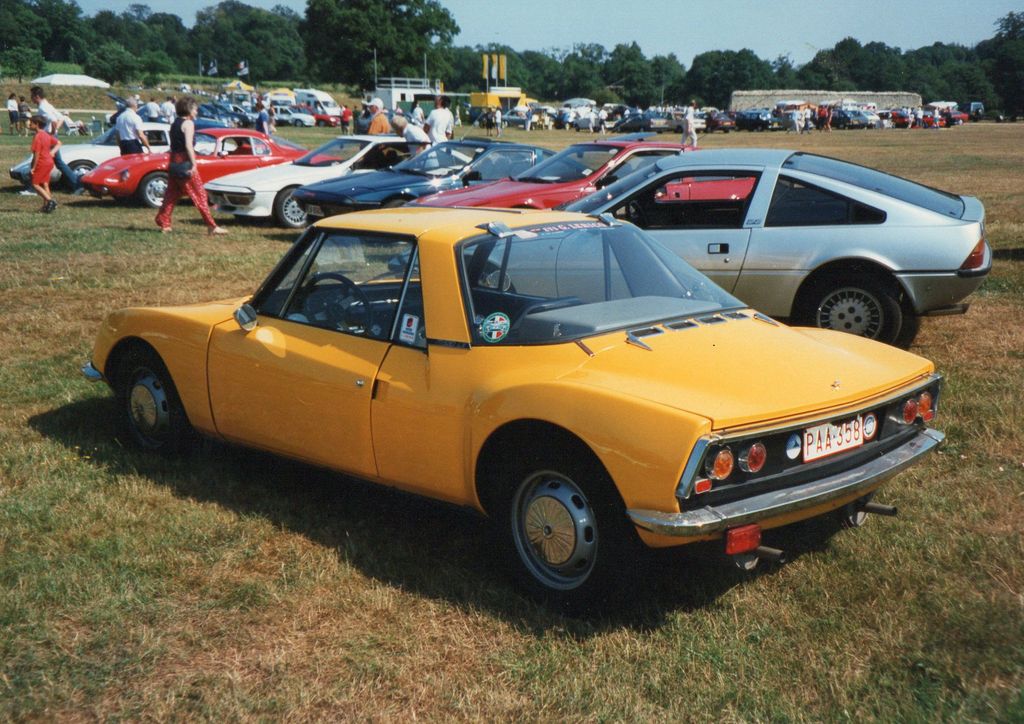
13. **Matra M530**In 1967, French car manufacturer Matra introduced a truly strange and futuristic vehicle, the M530. This little car, unlike anything seen before, featured striking looks, an engine nestled in the middle, and distinctive pop-up lights. It proved to be a groundbreaking design, kickstarting a cool car genre that would later see the emergence of rivals such as the VW-Porsche 914 and the Fiat-Bertone X1/9.
Despite its avant-garde styling, the M530’s performance, powered by a Ford V4 engine, was rather modest, delivering only 70 horsepower. This output meant it wouldn’t be classified as “fast” by today’s standards. Approximately 8,000 units were manufactured between 1967 and 1973, making it a relatively rare sight today. The Matra M530 remains a fascinating example of how bold design and innovative engineering could push boundaries, even if the raw power wasn’t quite there, setting a precedent for a generation of distinctive mid-engined coupes.
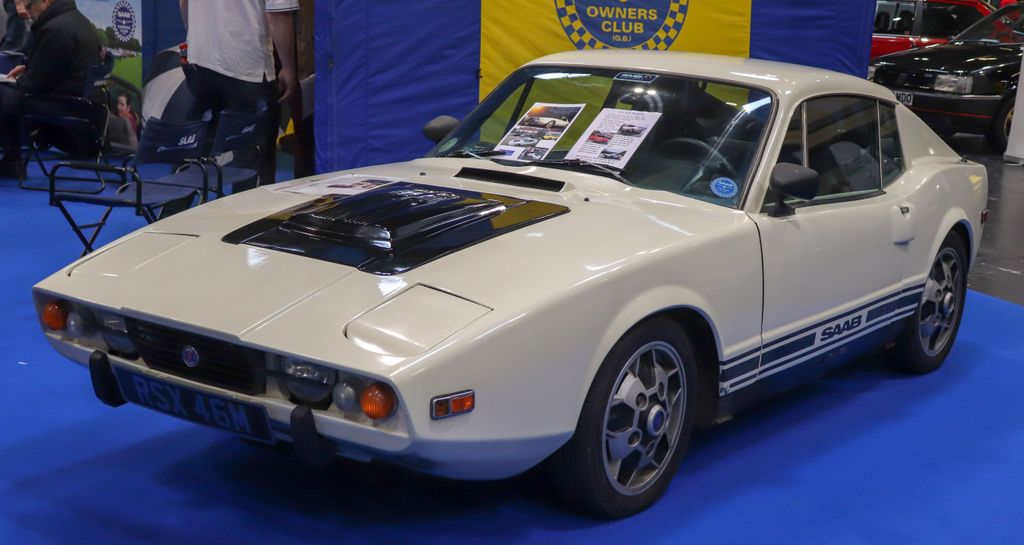
14. **Saab Sonett III**The Saab Sonett III, produced between 1970 and 1974, stands out as perhaps the most genuinely sporty-looking coupe ever to bear the Saab badge. Its design was unquestionably its strongest attribute, drawing inspiration from Italian aesthetics with its very curvy sides, a dramatically diving front end, and the sleek integration of pop-up headlights. This car was a clear attempt to offer a visually exciting option in the compact sports car market.
However, despite its arresting appearance, the Sonett III’s performance proved to be somewhat disappointing. With a modest 65 horsepower output, it could only achieve a top speed of 103 mph, which was not particularly sporty for the era. Disappointing sales, exacerbated by the global oil crisis of 1973, ultimately led Saab to cease its production. A total of 8,368 Sonett IIIs were manufactured, and while its dynamic capabilities might have fallen short, its distinctive design ensures its place as a unique, often overlooked, chapter in Saab’s history.
Car Model Information: 2022 Mitsubishi Outlander SE
Caption: Sonett V4
Name: Saab Sonett
Manufacturer: Saab Automobile
BodyStyle: Roadster (automobile),coupé
Assembly: Trollhättan,Arlöv
Production: 1955–1957 (Series I),1966–1974 (Series II and III)
Related: Saab 93,Saab 96
Categories: 1960s cars, 1970s cars, All articles with unsourced statements, Articles containing Swedish-language text, Articles with short description
Summary: The Saab Sonett is an automobile manufactured by Swedish automaker Saab between 1955 and 1957 and again between 1966 and 1974. The Sonett share its engines and other mechanical components with the Saab 93, 95 and 96 of the same era. It was mainly intended for the lucrative American export market and was only offered intermittently in the Swedish domestic market for the 1968 and 1972 model years.
The first prototype, now known as the Sonett I, is a two-seat, open-top, lightweight roadster racer. Ten years later, the name was revived for the commercially distributed Sonett models II, V4, and III.
Get more information about: Saab Sonett
Buying a high-performing used car >>>
Brand: Saab Model: Sonett III
Price: $18,409 Mileage: 57,702 mi.
Read more about: 12 Ridiculously Rare Wagons That Outshine Muscle Cars: An Enthusiast’s Deep Dive
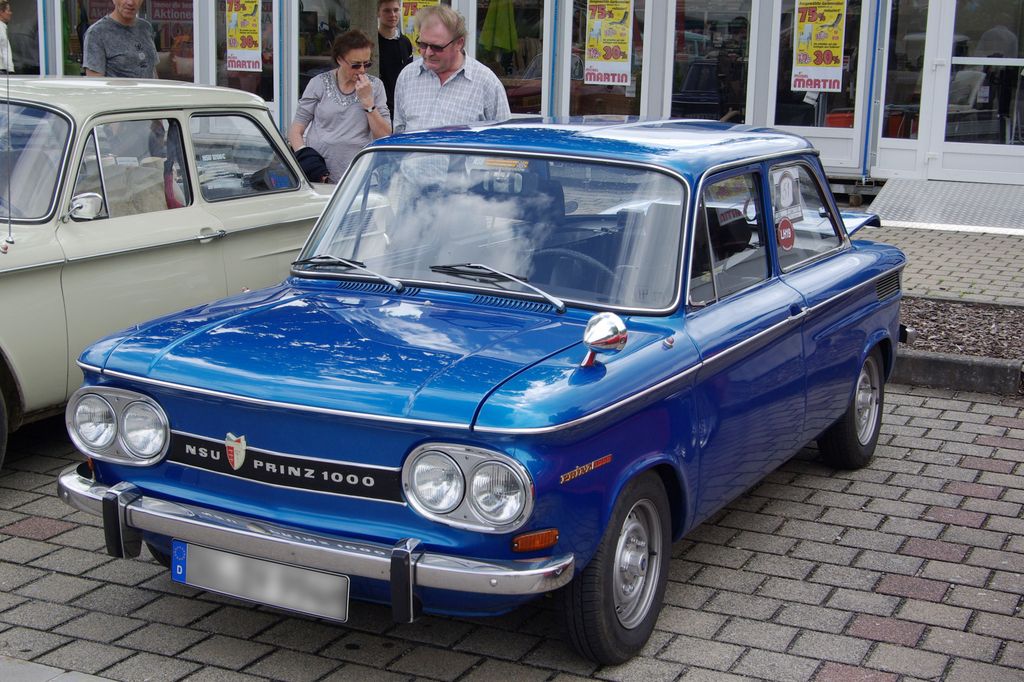
15. **NSU Prinz 1000**Hailing from Germany, the NSU Prinz 1000 carved out its own unique identity in the 1960s with a design that was compact, quirky, and instantly recognizable. While its overall aesthetic leaned towards utility, the distinctive rear-mounted engine and sharply proportioned body injected it with an undeniable character. This small machine excelled in urban environments, zipping through tight spaces with ease and confidently navigating traffic.
The interior of the Prinz 1000 embraced minimalism, offering just enough comfort for two adults, with space for an occasional back-seat passenger. Its rounded body panels and short nose created a singular shape that continues to attract curious glances even today. Though not flashy, the Prinz 1000 delivered a specific, efficient kind of motoring that resonated in European cities and left a lasting impression on American drivers who experienced it. It remains a prime example of how a compact car, imbued with personality and precise engineering, could blend efficiency with understated charm.
Car Model Information: 2022 Mitsubishi Outlander SE
Categories: 1960s cars, 1970s cars, All articles with specifically marked weasel-worded phrases, All articles with unsourced statements, Articles with short description
Summary: The NSU Prinz (Prince) is an automobile which was produced in West Germany by the NSU Motorenwerke AG from 1958 to 1973.
Get more information about: NSU Prinz
Buying a high-performing used car >>>
Brand: NSU Model: Prinz 1000
Price: $18,409 Mileage: 57,702 mi.
Read more about: Hidden Gems of the Highway: Revisiting 12 Forgotten Compact Cars of the 1960s
This journey through forgotten brands and distinctive models from the ’60s and ’70s reveals the sheer breadth of innovation, ambition, and sometimes, the sheer eccentricity that defined the automotive world during those two decades. From audacious failures to visionary designs ahead of their time, each vehicle we’ve rediscovered offers a unique perspective on the challenges and triumphs of car manufacturing. These machines, though no longer common sights on our roads, are powerful reminders that history is not just written by the winners, but by every contender who dared to dream and build, leaving their indelible mark for enthusiasts to uncover and appreciate for years to come.


